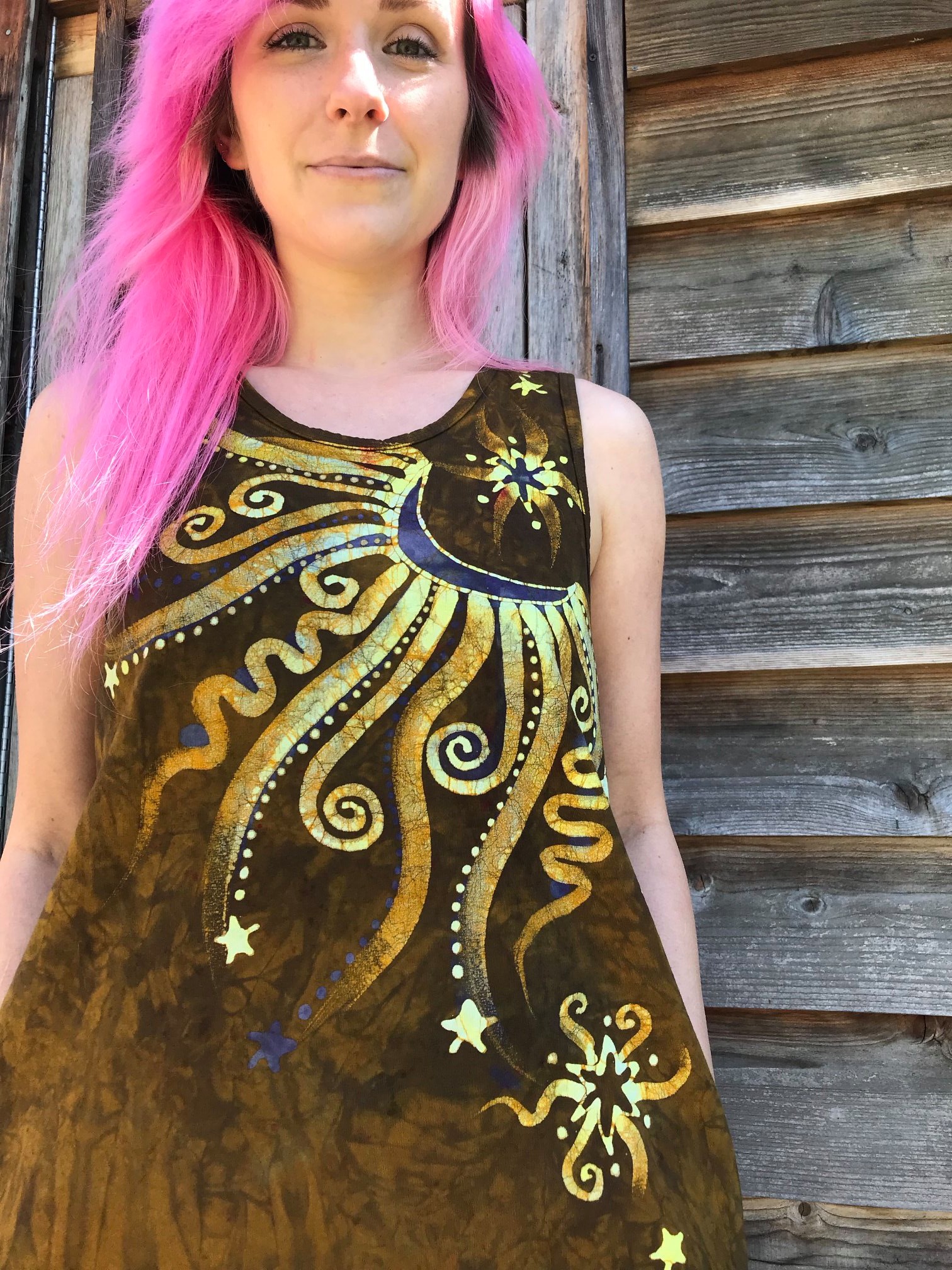Sunflower Bliss Batik Tees + Mixing Purple Dyes Coming Up
The sunflower shirts my students inspired me to make are finished and looking great. The mysterious thing is that all these batiks started out with the exact same color base, but ended with hugely different results. This is where your imagination really comes to play with the full immersion dyeing technique. Of course, they're all made with different fabrics so that's going to play a role in the outcome. You can see how I'm using different painting concepts regarding the color and direction I wanted each batik design to go. Anyway, the point is to always experiment with what you can do to defy all perceived limitations of the color wheel using procion dye and beeswax. Wax temperature, dye saturation, tjanting lines vs paintbrush lines - all these things play a role in the finished look of a full immersion batik.

The finished batiks can be found here for sale: https://www.batikwalla.com/collections/batik-tops-1/products/sunflower-bliss-handmade-batik-short-sleeve-vneck-lightweight-fabric Unless it is sold out.

We will be talking about mixing purples in an upcoming class. There is a trick to this!

Same color sequence as the dress before, but this fabric is different and picked up the dye more intensely. Los Angeles Apparel brand makes very receptive cotton garments. You can see how I forgot to paint a star when the dress was still purple. LOL!!
Do you see the purple star and dots? Tjanting work on the second layer.
This dress sold already, but I'm happy to look back on it.
This dye sequence is very difficult to repeat with any consistency unless you are meticulous with measuring both your dye and fabric each time. Even then, it's a gamble. Usually when I do pieces like this, I do them in a batch and sell it as one small batch. When they're gone, they're gone!



